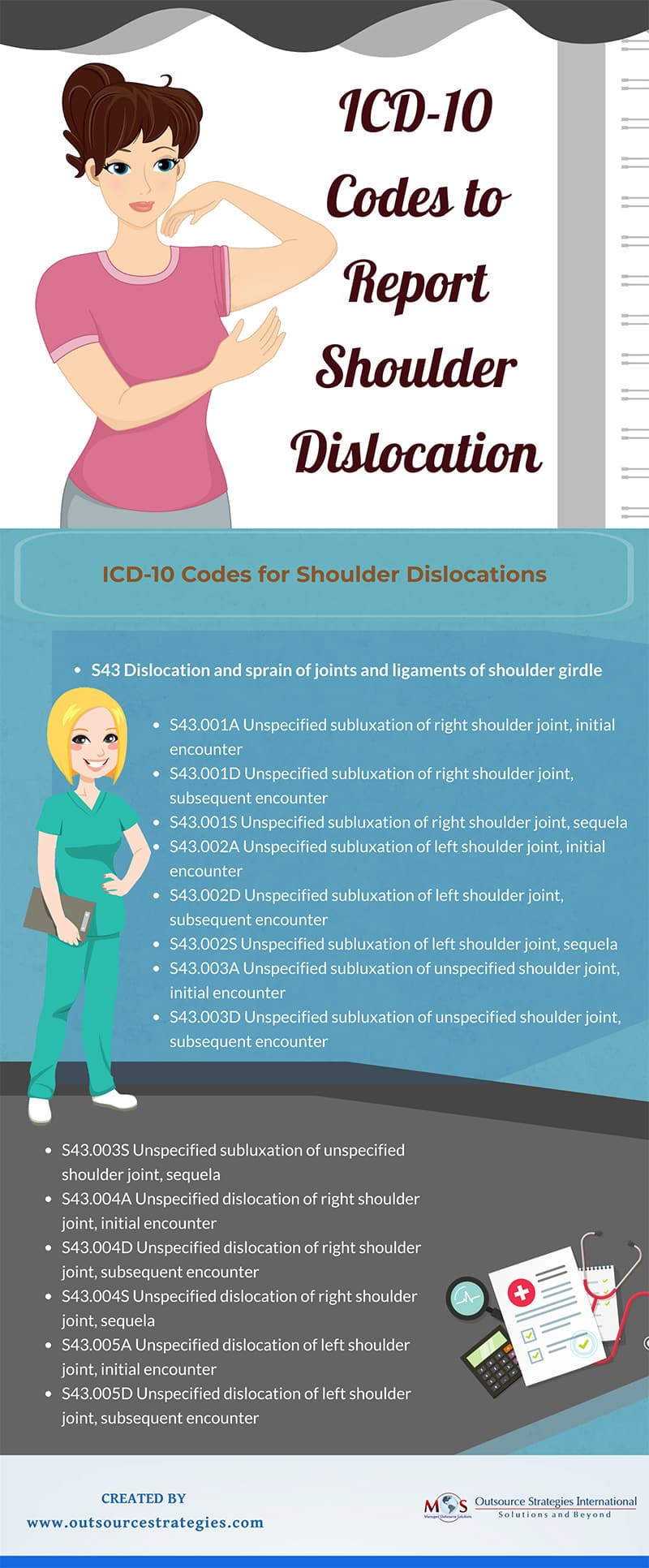Shoulder dislocation occurs when the humerus (the top of the upper arm bone) moves partially or fully out of the glenoid (shoulder socket bone). Contact sports, falls, and motor vehicle accidents are some of the common causes of shoulder dislocation. Emergency specialists, orthopedists, and physical therapists treating the condition need to submit error-free claims to ensure appropriate and timely reimbursement with thorough documentation and correct code assignment. To help coders to assign the correct ICD-10 codes, the documentation should specify the positioning, location of the dislocation including laterality (right or left), joint involved, the extent of the dislocation, and encounter. Imaging tests may be also recommended to confirm the nature and extent of the dislocation, which can be reported using specific CPT codes. Physicians can rely on medical billing and coding services offered by expert providers to report the condition correctly on claims.
Check out the infographic below




